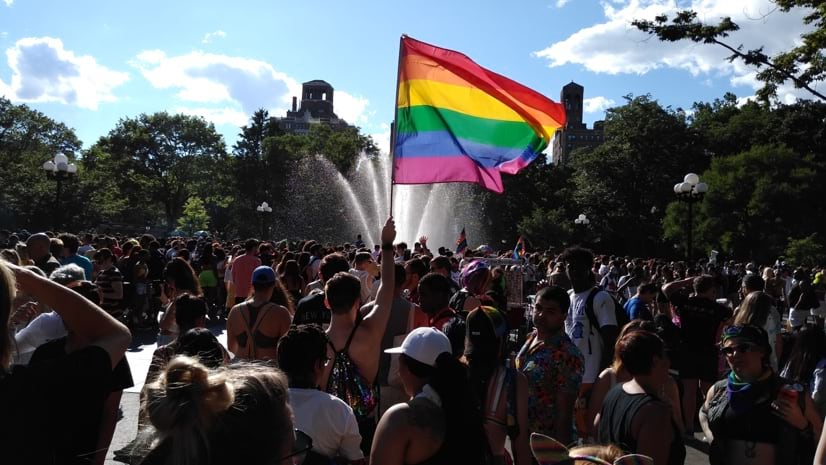
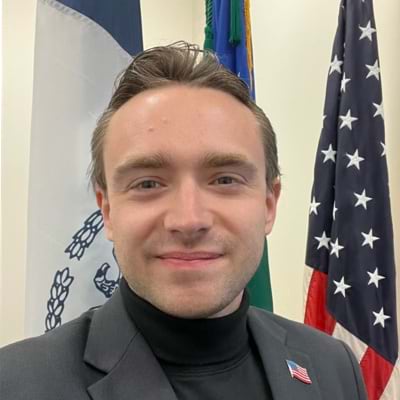
We make note of shelters and drop-in programs where LGBTQ youth can go, in hopes of preventing them from becoming alienated, victims, or having to engage in survival sex work.
October 11, 2022

Since the Stonewall Riots in 1969, the New York City Police Department (NYPD) has made strides forward in its inclusion of LGBTQIA+ members and outreach to New York City’s LGBTQIA+ community. This October marks the launch of a new LGBTQIA+ Resource Map installed on the smartphones of the nearly 35,000 officers in the department, timed to coincide with LGBTQIA+ History Month and National Coming Out Day on October 11.
The ongoing focus on diversity led Chris Chevallier, a data and intelligence specialist with NYPD’s Intelligence Bureau and recent addition to The Bureau of Alcohol, Tobacco, Firearms and Explosives’s New York Crime Gun Intelligence Center, to create the map that shows more than 150 LGBTQIA+ community resources, including shelters, counseling centers, and other connection points. Chevallier created the map using geographic information system (GIS) technology.
“LGBTQ youth are vulnerable to human trafficking and street-level hate crimes,” Chevallier said. “We’re hoping officers can pull up this map right on their phones to show someone where to go for culturally-appropriate help.”

Chevallier’s mapping work follows a pattern that’s similar to his postdoctoral research project in Ireland, which followed the country’s passage of the Gender Identity Recognition Act and coincided with Ireland’s ongoing debate over enacting hate-crime legislation. He worked with several professors and LGBTQIA+ organizations to conduct a survey of trans, nonbinary, and gender nonconforming students in higher education in Ireland to understand their needs and experiences. And as part of that process, they put together a scientific report, policy brief, and resource guide.
“Our research happened during a really pivotal moment in Ireland,” Chevallier said. “We brought together findings and links to helpful sources, and created a place where advocates, students and higher education professionals could go to educate themselves and help one another.”
That’s the kind of outcome that Chevallier hopes for with the creation of the NYPD LGBTQIA+ Resources Map.
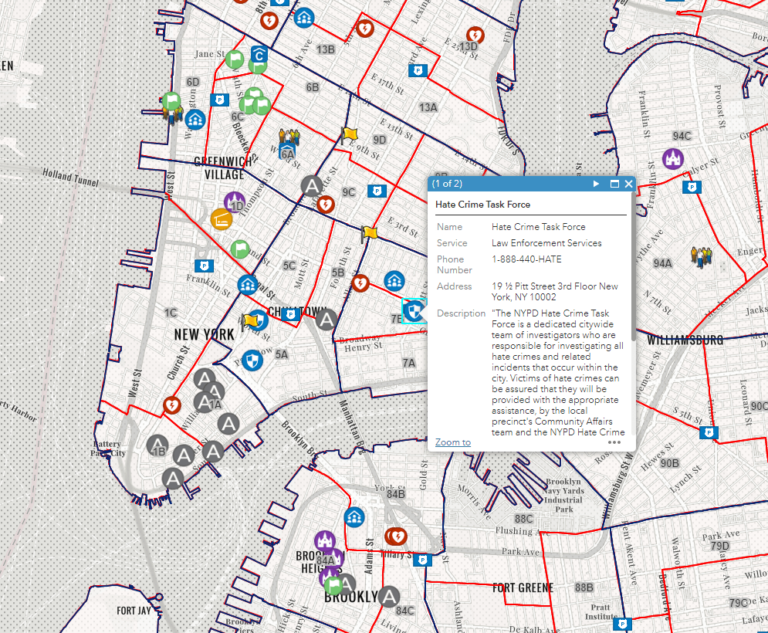
Chevallier was hired by NYPD as a GIS analyst and technician, but he’s also interested in social engagement. With this project, he was able to merge the two passions and build an ongoing resource app in collaboration with multiple NYPD bureaus as well as the department’s LGBTQIA+ liaison to the Police Commissioner, Sergeant Ana Arboleda, and LGBTQIA+ outreach unit liaison, Officer Dominick Martorelli.
“With the accompanying resource guide,” Chevallier explained, “once it’s published it becomes static. With the map, it can be accessed anywhere, and we can constantly update it with more information and assets. With it, I’m also able to mesh my technical skills with the field experience and in-depth knowledge of community issues that the Liaisons possess.”
NYPD will put the app into the hands of community outreach and youth-focused police in every neighborhood to help officers make people feel less isolated by connecting them with appropriate support systems.

We make note of shelters and drop-in programs where LGBTQ youth can go, in hopes of preventing them from becoming alienated, victims, or having to engage in survival sex work.
“The city is so large and complex that you could pass by a church and not know it has an LGBTQ support group on Thursday nights,” Chevallier said. “Or you might not know that the bookstore you pass by regularly is LGBTQ focused and its employees collect food for community members in need.”
With the app, officers will see where these resources are, and with contact information it will help them build alliances and partnerships.
“Hopefully with more information, more training, and access to these resources where they can self-teach and self-explore, it can really help officers,” Chevallier said. “If there’s a potential threat against the community, we’re also now better situated to deploy counterterrorism resources.”
Chevallier has received enthusiastic support from leadership and from the Gay Officers Action League (GOAL).
In December 2021, Keechant Sewell took office as the NYPD’s new police commissioner, and earlier this year the position of Deputy Commissoner for Equity and Inclusion was filled by Wendy Garcia.
“It has made a world of difference, both for the project and on a personal level, to have such enthusiastic support from executive leadership,” Chevallier said. “Working with Sgt. Arboleda, Officer Martorelli, and members of GOAL, we’re bringing about the change we want to see in the world.”
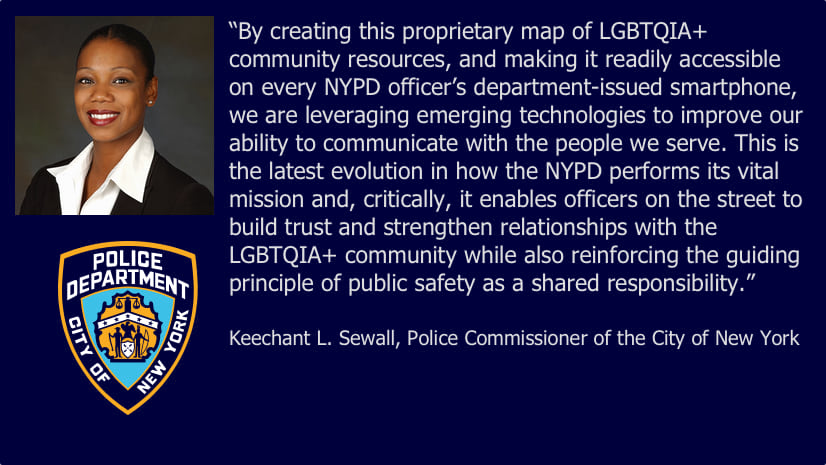
New York City has long been a place that valued both individualism and diversity, and it’s such a concentrated city, with an abundance of resources. “That’s one of the big things that motivates me and why I love this city so much,” Chevallier said. “It should be for everyone.”
In the resource guide, Chevallier notes how hate crimes are underreported and how building rapport with communities to receive tips can combat hate at the stage of warning signs instead of when it becomes violent.
“What hurts one person hurts another—there’s a ripple effect,” Chevallier said. “That’s why it’s so important to do this outreach work and build community partnerships.”
Learn how GIS is used to analyze and address inequities on the basis of race, gender, socioeconomic status, sexual orientation, disability status, and more.

March 4, 2021 |
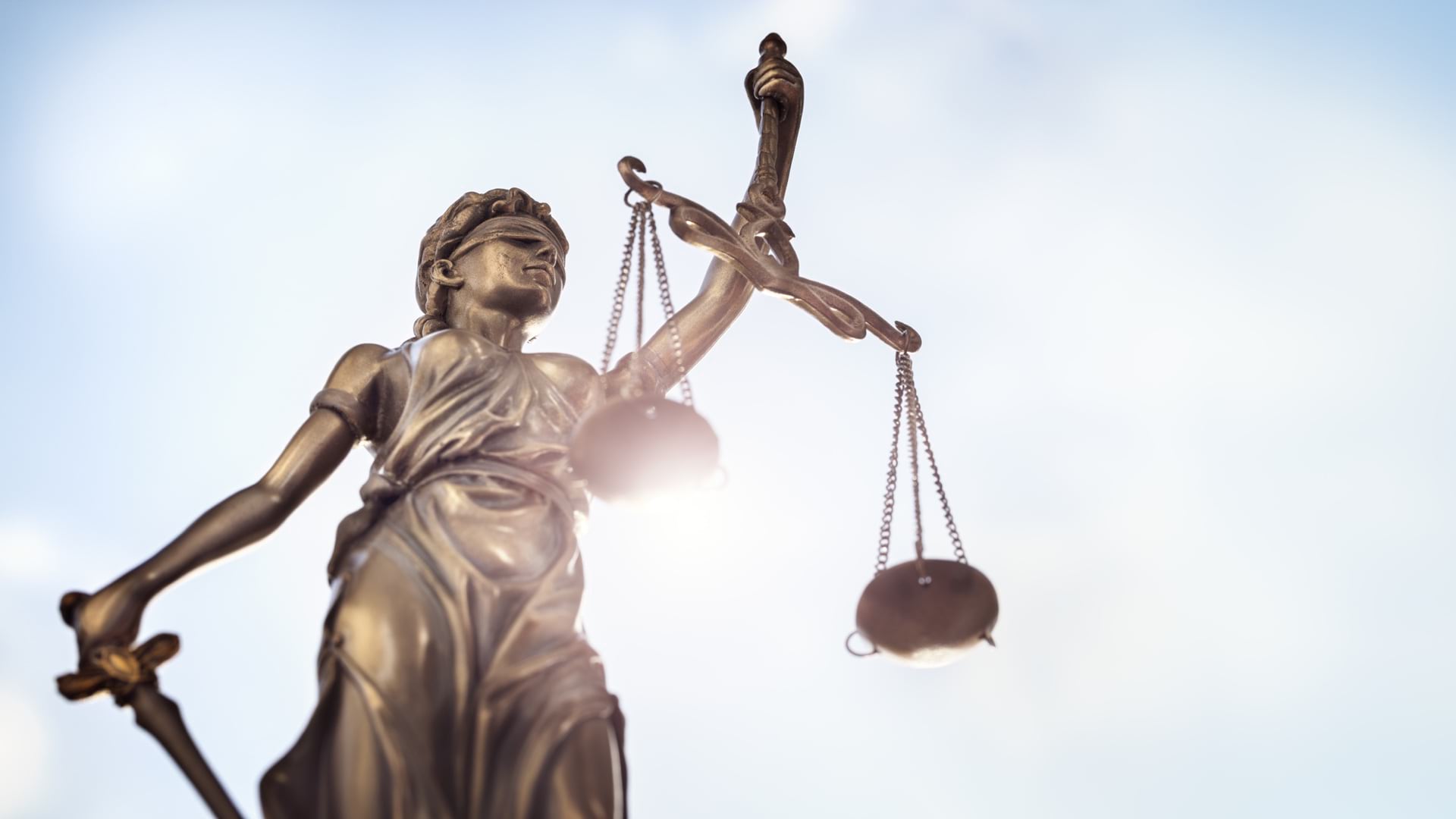
December 21, 2021 | Multiple Authors |
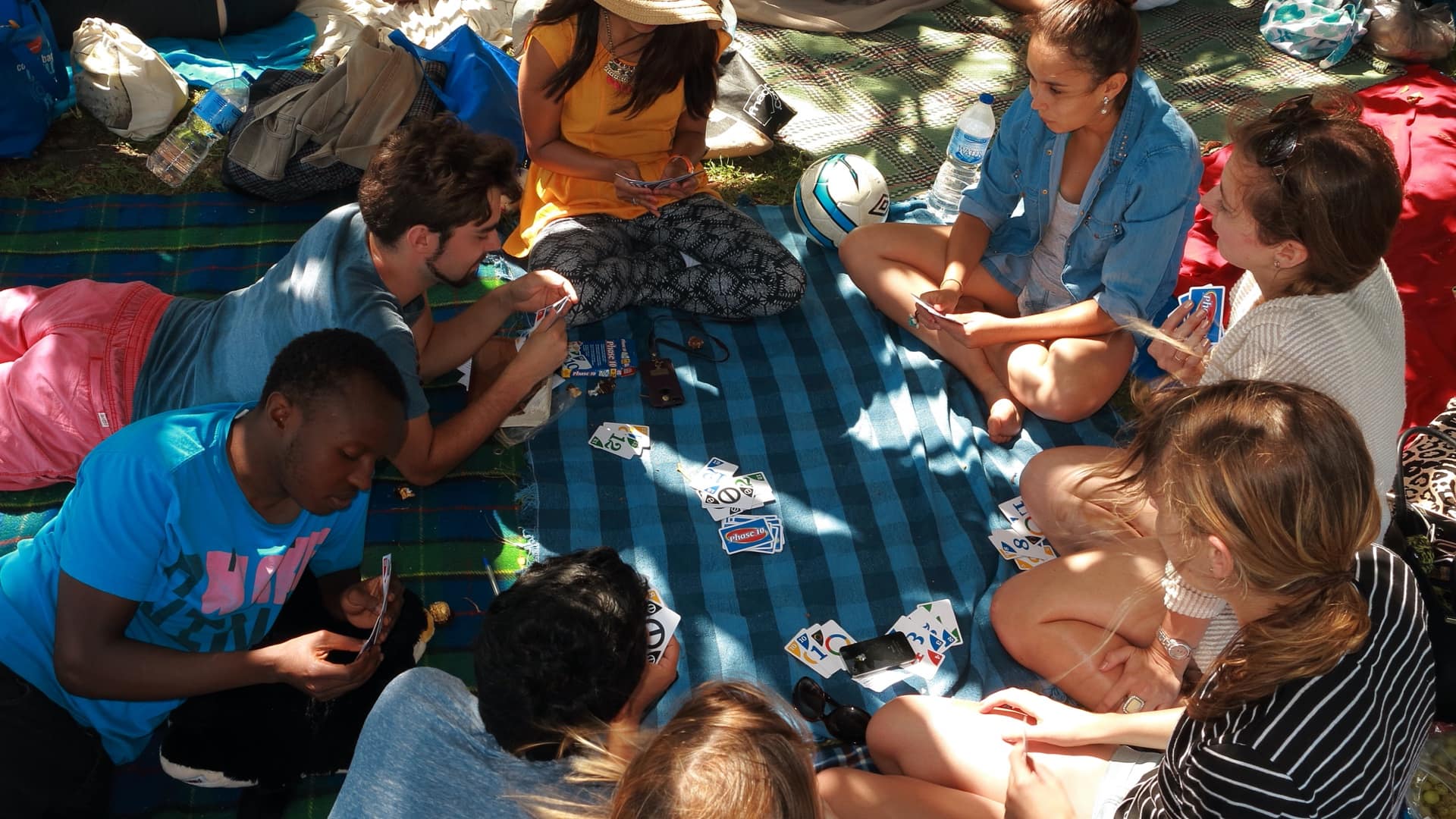
August 11, 2020 |